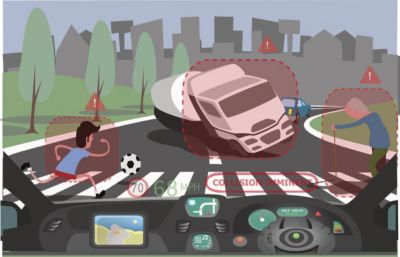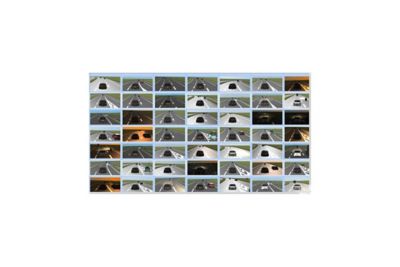Ansys 部落格
October 24, 2019
用模擬解決 3 大自駕車測試挑戰
自動駕駛車輛 (AV) 的測試與驗證,對於未來是否能讓消費者將自駕車用於日常交通需求,可說是極為重要。
工程師必須達成高標準要求,才能讓自駕車真正上路。不過,傳統上以原型為基礎的測試,需要耗費時間與龐大預算。
工程師需要利用虛擬測試環境,
才能在合理的時間範圍內,
完成自駕車測試與驗證
若要在短期內實現完全自動駕駛的車輛,工程師必須善用根據物理學進行的模擬,並利用虛擬實境模擬進行測試。這些數位工具能幫助工程師克服三大挑戰 (如下所述),以便測試並驗證自駕車的設計。
工程師透過 Ansys 與 AVSimulation 的合作,便能取得其中一項工具。這項合作旨在利用以 SCANeRTM 驅動的 Ansys VRXPERIENCE 駕駛模擬器,整合模擬與虛擬實境 (VR)。
挑戰 1:進階情境
交通狀況可能難以預測。當自駕車普及後,它們每天都會遇到不一樣的情境。
不妨想像:闖紅燈、逆向行駛或突然衝上人行道,對每一駕駛人而言都可說是罕見事件。然而,從全球角度來看,此類事件經常發生。
使用原型車測試自駕車對於這些情境的反應並不實際。道路上的原型車很少會遇到這些情況,而人為設置這些場景既危險又昂貴。
自駕車必須針對
這些獨特情境進行測試。
但原型實體車
不會經常遇到
這些狀況
相反地,我們能夠透過模擬技術,在諸如此類的特殊情境下,進行自駕車的測試與驗證。這些模擬不僅快速又節省成本,還能消弭對原型車、駕駛人與行人帶來的風險。
挑戰 2:日常交通、路況與標誌
工程師既不能忽視日常駕駛中的瑣碎面向,也不能忽視獨特情境。
對駕駛人來說,在停止標誌前停車已是自然的反應,即使所處情境有各種變化也不例外。
天氣、路況與交通狀況,都會影響到在該停止標誌前停車的方式。
自駕車必須在
交通情境的各種變化下
測試和驗證
甚至是汽車的引擎與輪胎,都可能為情況加添變數。人類通常擅長於適應這些情境。
不過,由人工智慧 (AI) 控制的車輛,卻往往不是如此單純。它們需要針對停止標誌的各種可能變化進行測試。
實際測試這些情境,同樣可能危及人命與設備。此外,在全面測試所有情境時所涉及的重複性工作,也可能導致人為錯誤。
工程師可使用參數化、模擬與虛擬實境,以探索自駕車的有效範圍。如此一來,電腦能在短時間內自動運行多種停止標誌的情境變化。
挑戰 3:感測器與感測器陣列
自駕車需要用到大量感應器,才能清楚掌握周遭環境,包括使用攝影機、光學雷達、雷達、熱像儀等。
其中一項挑戰是測試在單一或多個感測器失效的情境下,這些陣列的表現。
透過模擬進行自駕車測試時,可建立感測器故障模型,例如前置攝影機故障,藉此判斷自駕車的因應方式,讓工程師得以快速判斷車輛功能是否安全。
眩光可能影響到
自駕車的多種感測器。在這些情況下,
可透過模擬測試
並驗證感測器陣列
軟體讓工程師能進行自駕車測試
Ansys 與 AVSimulation 的策略合作,旨在讓自駕車的開發、測試與驗證更加快速與安全。
其中的關鍵在於整合 AVSimulation 的 SCANeRTM 與 Ansys VRXPERIENCE 所提供的模擬與虛擬實境工具。



